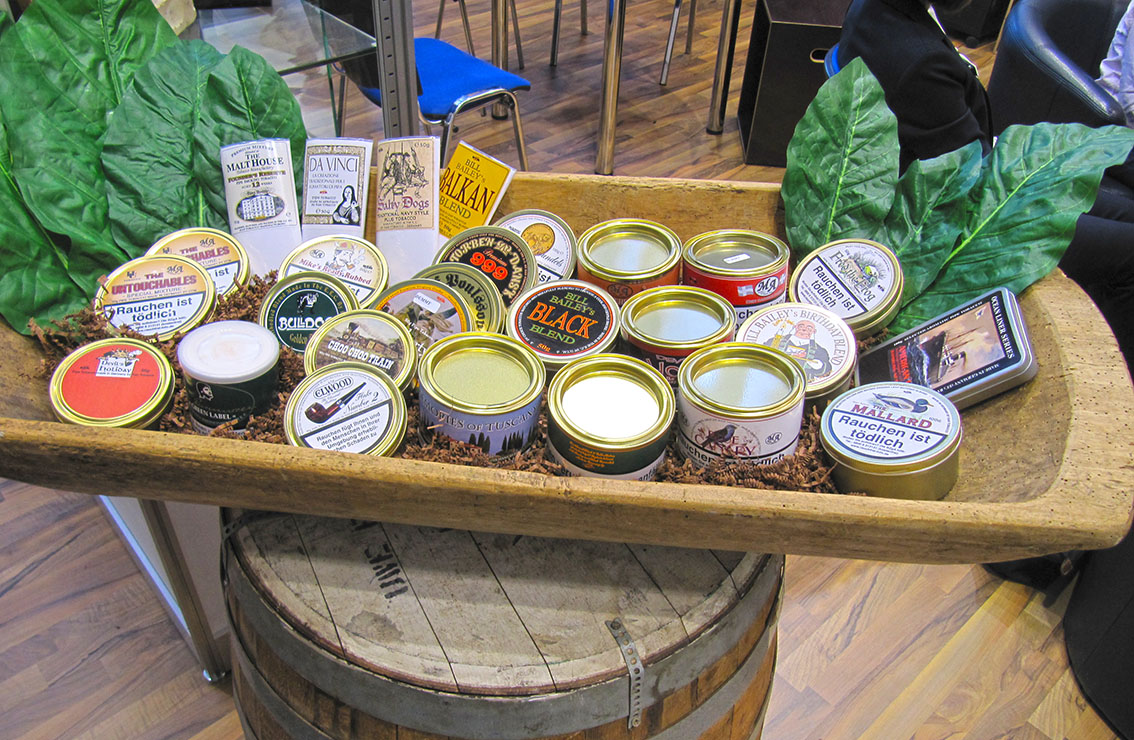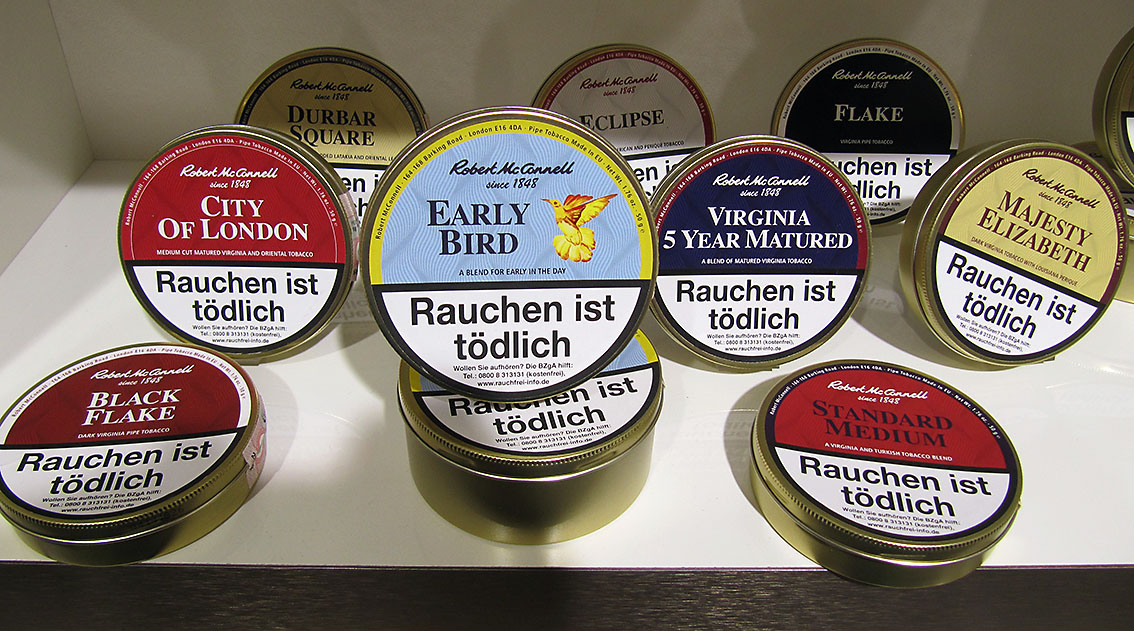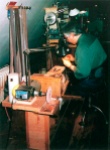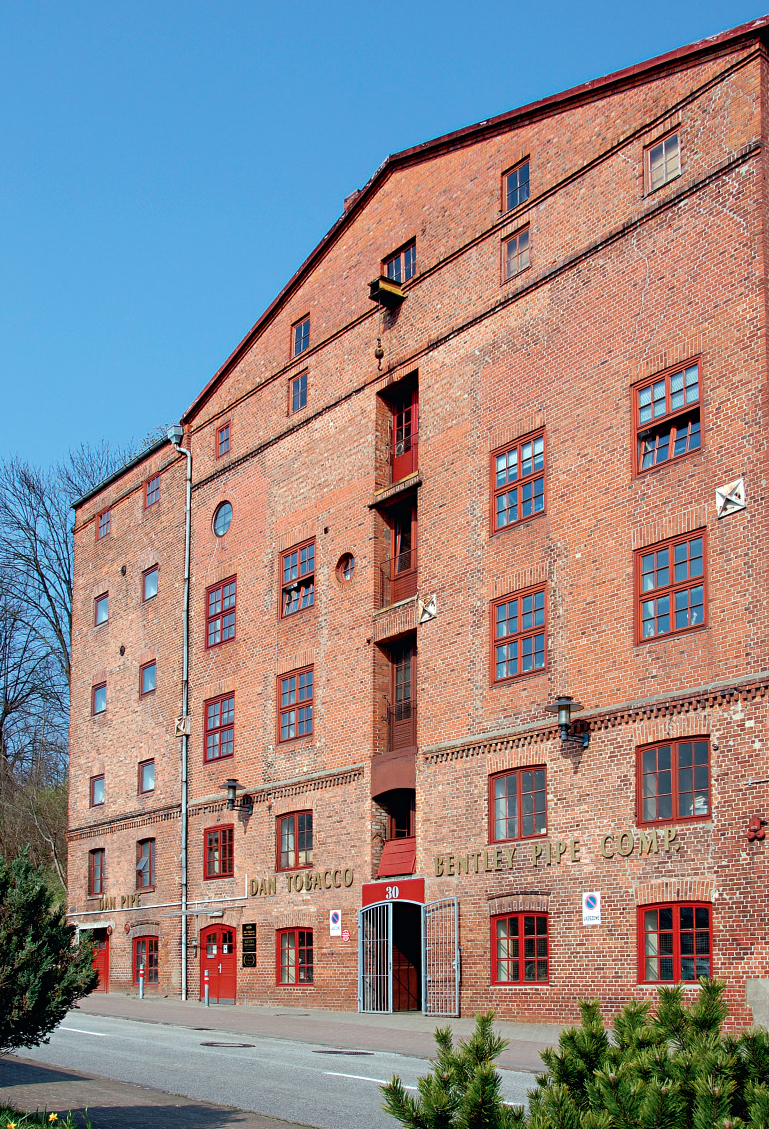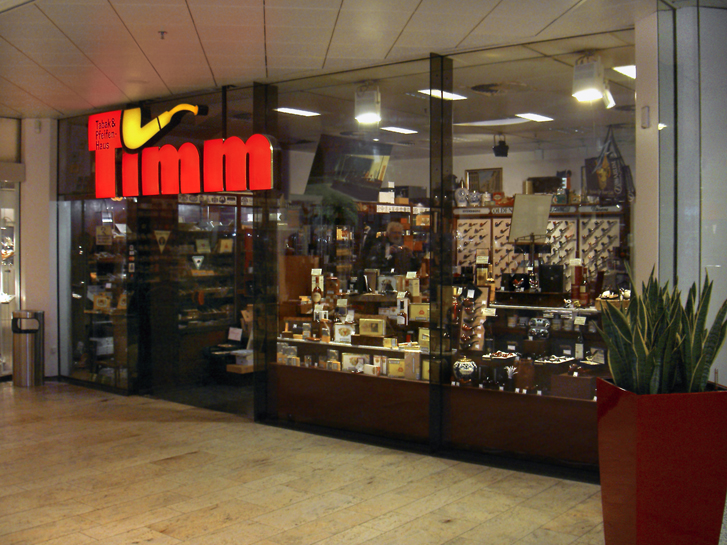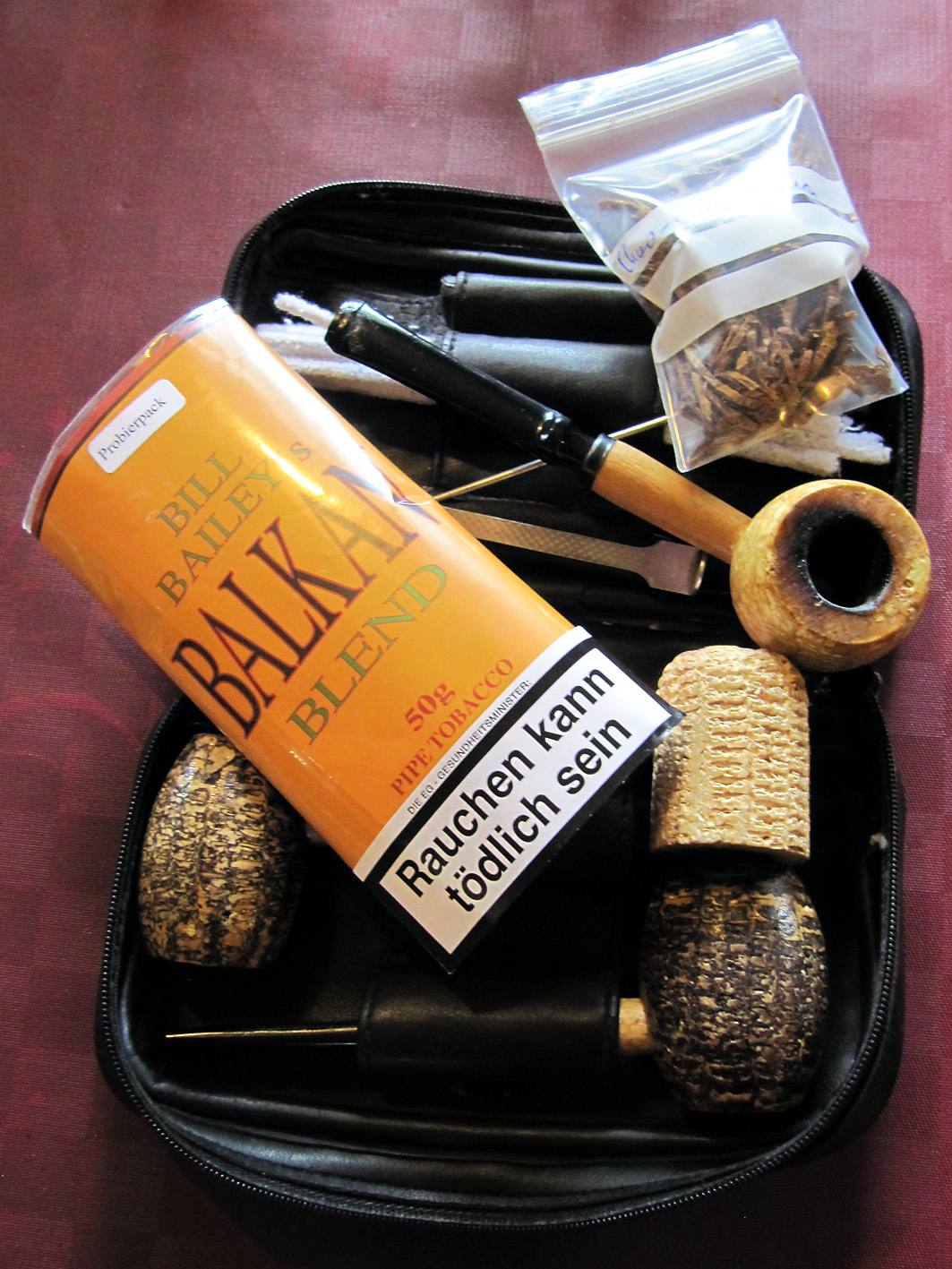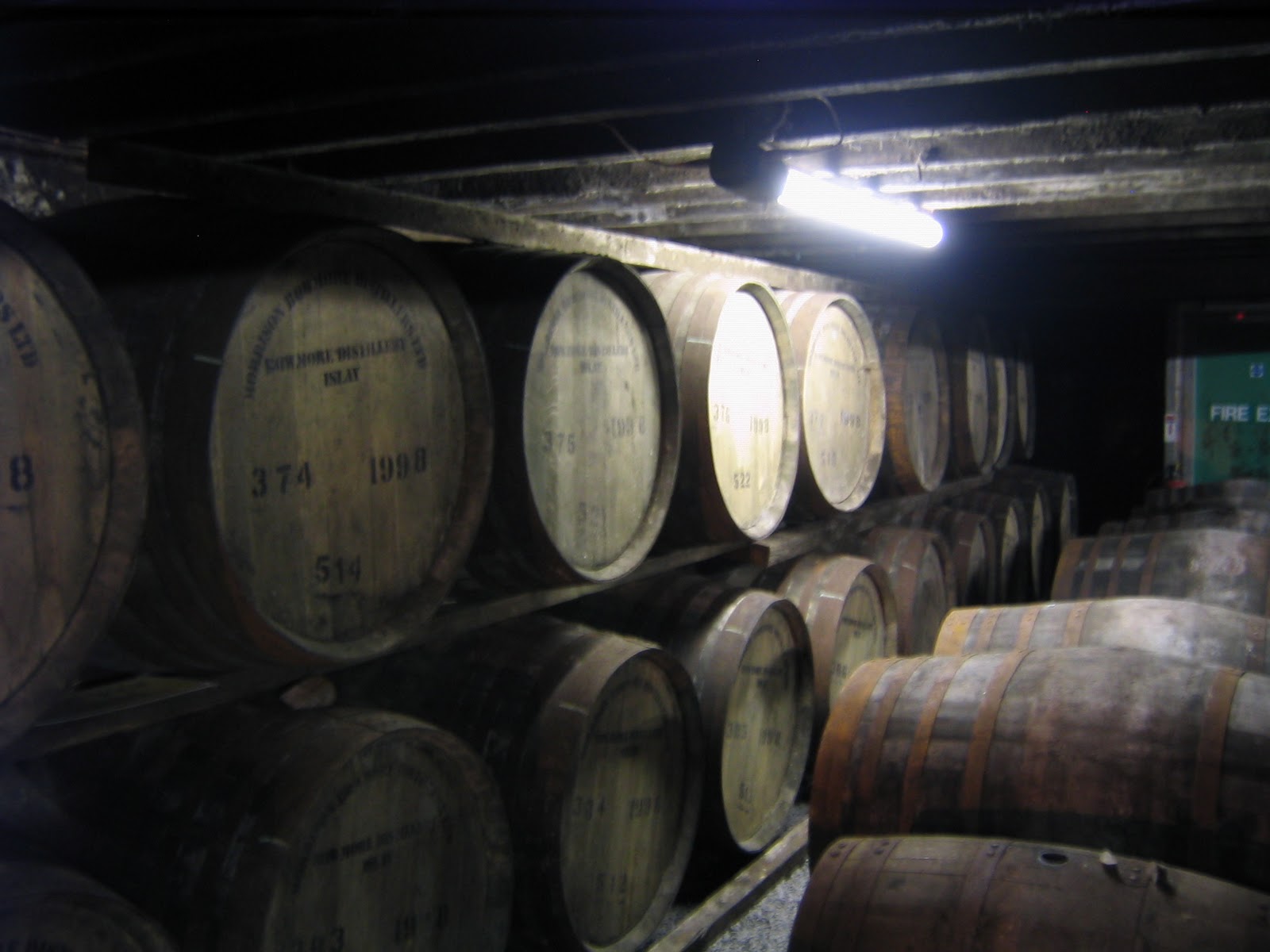September 21st it was once again time for one of my annual highlights: The Inter Tabac fair in Dortmund. For those of you who missed the blogposts I made of the visit the last couple of years; the Inter-Tabac (which celebrates its 40th anniversary this year) is the leading and biggest trade fair of the world for tobacco products and smoking accessories. Last year 625 exhibitors from 54 countries presented trends and innovative tobacco products. This included cigars, cigarillos, cigarettes, E-cigarettes, E-pipes, E-shishas, smoking accessories, pipes, pipe tobacco, shishas, shop equipment and spirits. And yes, one is still allowed to smoke inside. Unfortunately the fair is for retailers, not for consumers. Like the previous years I was able to secure a ticket through Fred. The saying goes, the more the merrier, so (with approval of Fred) I invited good friend Ed. A couple of years ago he should have went with me but unfortunately had to cancel at the last moment because of a migraine attack. Now we agreed to meet each other at the McDonald’s in Apeldoorn near the highway. About the same distance from home for each one of us so very convenient.
I got there first and after 10 minutes Ed followed. We grabbed an invigorating cup of coffee and stepped into Ed’s car. Or to be precise, the lease car from his wife. A big luxurious Peugeot (don’t ask me which model, I’m a car noob, I own a 1996 Toyota Starlet and am very content with it) with a German environmental sticker which you need in most German cities. The main reason he did not bring along his own vehicle. Thanks to the modern navigation system in the Peugeot the ride to Dortmund went smooth. Part of highway we had to take was closed down which the intelligent navigation knew and effortlessly guided us through an alternative route. Also the weather was heavenly, blue skies, sun, a beautiful late summer’s day. When we arrived at the Westfalenhallen we could park near the entrance. Which had changed somewhat. Last year there was a big renovation going on and now we could see the result, modern and spacious.
Like the years before the first stop was Danpipe. Simply because I know a lot of people there and they always serve coffee. We were greeted by former masterblender Andreas Mund and his charming wife. Former masterblender? It turned out that Andreas’ wife has that job now. “Her tasting palate is way better than mine.” Andreas explained with a grin. “But I still do things like buying in raw tobacco.” I asked how Danpipe was doing and while winking if they had something new which I could smoke. Last year they had a new blend which no one could smoke because they had only a prototype with them. You know, like sucking on a joint and don’t inhaling it. Andreas answered: “We are doing fine, I am busy as hell, only Herr Behrens (one of the directors) is not here because he has to undergo surgery for his hip. He is getting old… But we have two new blends (which were put on the table by his wife), Okapi and Kiboko. Okapi was created by my wife and Kiboko by Michael Apitz.” I took a sniff of both, Okapi is Virginia based, a bit of a rubbed out flake with some rose leaves but still pretty natural. Kiboko is a full frontal aromatic and to be honest I forgot what was in there.. It was nice to see the new division of roles at creating new mixtures at Danpipe. Andreas’ wife for the more natural tobaccos, Micheal Apitz for the aromatics. I asked if I could fill up a pipe with Okapi which was graciously allowed. A fine blend, smooth despite being very young, could be an all day smoke.
Andreas and his wife had to attend to some clients (a Davidoff representative who, hopefully for Danpipe, wants to have another year-blend made there) so another, tall, woman came standing with us. Damned.. I recognised her but could not lay my finger upon it. “You don’t recognise me??” she said almost offended. “Last year when you visited our shop in Lauenburg I sold you some cigars!” “Oooooh, of course!” I said with a fast reddening face. “Did you know we don’t bring out our (famous) catalogue anymore?” she said. Well, normally the catalogue would be on all the tables and now it wasn’t I noticed. “We decided to skip it and put the money in a larger and better website to crank up our sales, it is going to be fantastic.” In the mean time Fred had joined us, always very nice to see and speak to him. He is busy growing his own Virginia leaf in The Netherlands near where he lives. I sometimes see pictures on his Facebook page and it is looking well. Last year I smoked some of his first batch and it was amazingly good! He grinned because he had a good adventure with the Dutch tax authorities. He said to them he grew so and so much of his own tobacco. They had nooo idea what to do with that. Tobacco is taxed when it is sealed in pouches or tins, but raw tobacco?? Just go on, they said to the amusement of Fred.
When I took a look at the Danpipe assortment I was approached by a man. “Excuse me, but are you the Dutch Pipe Smoker? My name is Torbjörn, I am from Sweden and I read your blog and sometimes comment on it.” Wow, I got recognised! A very friendly man, he was looking for a good Danpipe Virginia so I gave him some advice, being a bit familiar with the assortment. We chatted for a bit and had our picture taken for the Swedish Pipe Club of which he is a member. I just love this kind of meetings with pipe smokers from another country. Back at the table with Ed and Fred I suddenly felt some hands on my shoulders, it was Michael Apitz. Always a delight to speak to him, you put in a dime so to say and he keeps on talking, wonderful chap. He makes a blend for his own which includes tonka bean essence and explained how to make the latter. “Very easy, you take a lot of tonka beans, put them in a towel and bash them to pieces with a hammer. Those you do in a large mason jar and fill it up with pure alcohol. Then let it rest for about 4 months. After that when you have a blend you put in 5% of it, put it away for a while and ready!”
 At one point Fred said, let’s go to Elbert (Gubbels, of Big Ben amongst others). Elbert has a bit of a lounging area at his stand so we sat there. Despite being very busy he took the time to speak to us. Of course we know each other longer because of the whole forum tobacco Flatlander Flake project. Elbert is been having a rough year. The pipe-making part of his company he had to let go bankrupt. He had way too much stock and everyday new pipes were added to it. So with lots of pain in his heart he had to fire several employees and shut down production. Now he is selling his stock and looking for companies in Italy to produce pipes for him. That is to be said, only the less expensive lines. The high end ones are still going to be made at the Dutch factory. I wish him all the best of luck with that!
At one point Fred said, let’s go to Elbert (Gubbels, of Big Ben amongst others). Elbert has a bit of a lounging area at his stand so we sat there. Despite being very busy he took the time to speak to us. Of course we know each other longer because of the whole forum tobacco Flatlander Flake project. Elbert is been having a rough year. The pipe-making part of his company he had to let go bankrupt. He had way too much stock and everyday new pipes were added to it. So with lots of pain in his heart he had to fire several employees and shut down production. Now he is selling his stock and looking for companies in Italy to produce pipes for him. That is to be said, only the less expensive lines. The high end ones are still going to be made at the Dutch factory. I wish him all the best of luck with that!
Fred wanted to go somewhere else so Ed and I strolled through the alleyways. I have been many times at the Inter Tabac but it could be that this was my last one. As far as pipes and pipe tobacco goes I have the feeling it is going downhill. It always amazes me how Danpipe and Gubbels can cough up the costs for their stands each year. Samuel Gawith no longer attends the fair since Bob Gregory left. I read on PipesMagazine the following: “Chris (Gawith) has recently taken over the company with the passing of his father and is now in the process of applying his expertise in engineering (he’s an engineer by trade) to the company with process improvement and oversight.” Well, I know Bob left for a reason, mainly because he was fuming that the company wants to do things wholly different than the last 200 years and he could not stand behind it. So I hope Chris understands that the quality of the Gawith product still has to be spot on because otherwise I think he is going to lose a lot of customers and murders a centuries old company.. Also MacBaren was not present, they held court at a nearby hotel. But I had made an appointment with Per Jensen later that afternoon. Planta was also not present, the reason of it I heard later that day. Walking through the halls I noticed an increase in cigar companies, the cigar is booming as far as I can tell (almost every damn brand has some Cuban cigar-roller at the entrance of their stand). To the delight of Ed because he likes them a lot. It was like wonderland for him sometimes. “Oh! I know that guy! I follow him on the internet!” He exclaimed several times. Drew Estate had a large stand with some good looking girls. I don’t smoke cigars that much but I like a lot of their offerings, especially the Kentucky Fire Cured range. “Look! There is Jonathan Drew, the co-founder and president!” Ed said awestruck. Jonathan, while grinning because he saw the pipe in my mouth, patted my shoulder and said “hello mate!” “I don’t think I would wash that shoulder for some time.” Ed said with a wink.
After lunch (I told Ed to bring lunch with him because food and drinks are very €xpen$ive at the Inter Tabac but he left it in the car and opted for some fries) we went looking for Cornell & Diehl (Laudisi). Last years they had just a small desk and that was it. This time there was a bigger stand with lots of Peterson pipes and beside the always friendly Ted Swearingen owner Sykes Wilford was also there. I really wanted to shake hands and speak with him but he was busy with a client and you know, business first! Luckily Ted was talkative about the new Peterson pipes and tobacco situation in the USA. Last times I was at Peter Heinrichs in Bergheim there was no new Peterson stock. Which surprised Ted because nothing changed distribution-wise. The USA tobacco situation is a bit on hold. They even began with taking of the warning labels from the tins again. They had some loose tobacco in a container without label. I smelled it and immediately recognised it; Autumn Evening, one of my favourite aromatic blends. When I asked if he had the newest GL Pease offering, Penny Farthing, with him he said no. “But I do have an aged tin of Bayou Night with me that you can have.” “Excuse me? Wow, wonderful, thank you very much!” I blurted out. Thank you very much Ted!
Then we went to the stands of Kohlhase & Kopp and Vauen. At the former you could really notice the rise of the cigar and the “downfall” of pipes and tobaccos. It is getting a bit less each year. Despite that, I have to say the stand was well visited. Vauen is one of the few pipe makers who try to innovate each year. This time they had the Edgar model, a sporty designer pipe with cooling ribs made of ceramic composite. Ed and I wanted a drink so I opted to go the huge stand of the Scandinavian Tobacco Group. One of the places where you can sit relaxed, have a (free!) drink, smoke and no one bothers you. Of course we went to see the Winslow, White Spot (No, no Dunhill.. White Spot! Idiots…) and Stanwell pipes first. As usual Poul Winslow had a whole range of beautiful pipes, some really big! When we sat down with a drink (brought by a lovely lady with one pair of the brightest blue eyes I had ever seen, no picture unfortunately) I put my pipe-bag on the table, filled with several Winslow pipes, and we had a smoke. I tried the Bayou Night and it was excellent! I am going to enjoy smoking up that tin. Suddenly Poul Winslow himself spotted us, or to say, his pipes on our table. He asked if he could take a picture from us for his Facebook page. Of course, go ahead! And indeed, a short while later my fat head was on his social media: Winslow fan! Between the halls there also was an interesting stand: Cigar Rights of Europe. In short, they advocate the right to smoke a cigar (or a pipe) in Europe which is becoming increasingly difficult because of all kinds of laws and regulations. So I would say, go to their website and become a member!
 We took a fast stroll through the water-pipe and e-smoke halls, which amazed Ed. “Like walking in the Middle East or India! Those people and smells!” he exclaimed. Then the time had come to go to the mighty MacBaren, who were located in a private room in the nearby Dorint hotel, only a short walk from the Westfalenhallen. We were greeted by product manager Per Jensen, who was glad to see us. “The sales-representative guys from us have enough work, but I just sit here..” Per recently got married so as a present I gave him a bottle of genuine Dutch jenever saying that as a married man he probably now needed this. We sat down, Per got us some drinks and I asked him why they were in the hotel instead of the Inter Tabac. “Well, as you know the previous years we were in a large stand together with Arnold Andre. This year they decided they did not want to have a stand in the Westfalenhallen and opted for a room in this hotel. We still could have gone but then we would have nothing to say about the location of our stand..” said Per. So this was a better option indeed, can you imagine MacBaren between the water-pipes? He asked me if we visited the Inter Tabac. “Of course” I said “but it is going downhill.. I mean, no MacBaren, no Gawith, no Planta..” Per veered up “Ah! It has a reason Planta is not there.” At which he guided me to a big sign at the entrance (which I did not see) which read: “Planta, we are delighted to bid you welcome to our MacBaren family.” Holy sh*t! MacBaren had bought Planta! For a moment I thought I had a scoop but later I read the news on PipesMagazine.com which I totally missed. Bummerrrr…
We took a fast stroll through the water-pipe and e-smoke halls, which amazed Ed. “Like walking in the Middle East or India! Those people and smells!” he exclaimed. Then the time had come to go to the mighty MacBaren, who were located in a private room in the nearby Dorint hotel, only a short walk from the Westfalenhallen. We were greeted by product manager Per Jensen, who was glad to see us. “The sales-representative guys from us have enough work, but I just sit here..” Per recently got married so as a present I gave him a bottle of genuine Dutch jenever saying that as a married man he probably now needed this. We sat down, Per got us some drinks and I asked him why they were in the hotel instead of the Inter Tabac. “Well, as you know the previous years we were in a large stand together with Arnold Andre. This year they decided they did not want to have a stand in the Westfalenhallen and opted for a room in this hotel. We still could have gone but then we would have nothing to say about the location of our stand..” said Per. So this was a better option indeed, can you imagine MacBaren between the water-pipes? He asked me if we visited the Inter Tabac. “Of course” I said “but it is going downhill.. I mean, no MacBaren, no Gawith, no Planta..” Per veered up “Ah! It has a reason Planta is not there.” At which he guided me to a big sign at the entrance (which I did not see) which read: “Planta, we are delighted to bid you welcome to our MacBaren family.” Holy sh*t! MacBaren had bought Planta! For a moment I thought I had a scoop but later I read the news on PipesMagazine.com which I totally missed. Bummerrrr…
“Besides other things they had trouble implementing all the European regulations. The factory in Berlin will be closed and production will go to Denmark. Which is a good thing! Not to bash Planta but they were pretty old-fashioned. Not a single recipe was written down, all in the heads of the employees!” Per said while shaking his head. “Of course the most well known Planta brands will stay, but some I had to let go. The first being McLintock Syrian Latakia Blend. They did not have Syrian latakia for years!” Which I already thought, not too long ago I smoked a couple a Planta blends which said to have the Syrian dark leaf. To my taste it absolutely wasn’t. And what about Presbyterian? I know Planta had 2 versions, one sweetened 100 gr. for the German market and the original 50 gr. for the rest of the world. “I have to look into that, but Presbyterian always has been about the latakia for me. A great entrance into the world of the dark leaf.” Per said. I’ll keep my fingers crossed. “Talking about latakia, I am working on a project with a whole new kind of latakia, but I can’t say anything about it yet. Next year when you are here” Per said with an evil grin. Damn! Then he fumbled in his backpack and took out a blank tin with something written on it. “This is a another project on which I am working. It is a blend which also contains Nicotiana rustica. I like you to smoke it.” Normally the tobaccos we smoke are from the Nicotiana tabacum variety. Once I had a snuff tobacco which had some rustica. Lets say it kicked like a mule, very potent stuff. So a pipe tobacco with it.. Whoah… It was a flake so I took my smallest Dunhill pipe, filled it halfway and lighted it. The taste was good but after only a few puffs I could notice the potent rustica. I did not finish the bowl. “Excellent!” said Per. “It is then precisely what I wanted. A kick-ass blend for the American market.” I wished him luck while sipping on a sweet beverage to counter the nicotine.
Time flew by while talking to Per. Very enjoyable and very informative I can say you! It got to dinner time, our bellies were grumbling so we said we had to go. “I can’t leave you without anything!” Per said. He reached back and produced two pouches of new Amphora mixtures: English blend and Kentucky blend. “They are for the American market and next year they will also be available in Europe.” Ehrr, thanks!! And that was not the only thing he gave us. Tins of snus (for my good friend Rob) were put on the table, the whole (!) HH range and 2 tins of the (excellent) new Three Nuns. “Do you want something from the Planta assortment? Pouches only I am afraid.” “Ehmm.. Danish Black Vanilla please!” I squeaked with a high voice. Unbelievable! Per, thank you so very much!!! Of course I divided the stash between Ed and myself. “Let’s make this a yearly tradition, see you next year!” Per said while guiding us out.
“Wow, what an experience, this whole day! Everything! The companies, the people, the water-pipe hall, Per Jensen..” Ed said on the way to the El Greco Greek restaurant in Herne. The traditional dinner stop. I totally agreed with him. Despite the downhill feeling at the Inter Tabac itself the few pipe (tobacco) companies that remained still were going strong. And of course the MacBaren experience in the hotel was mind-boggling. The weather was still warm so we sat outside at El Greco with a tasty German beer and a big plate of grilled meat. At that moment life could not have been any better.













